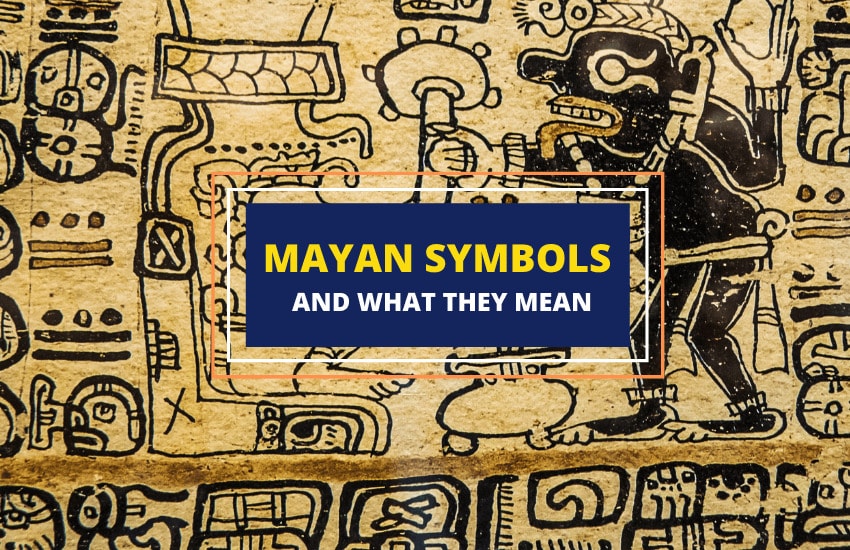
Table of Contents
The Mayan civilization was one of the most culturally developed, colorful, and advanced for its time in human history. The oldest Mayan writings archaeologists have discovered date back as far as 250 B.C.E., but it’s believed that they were written long before that.
At a time when most European cultures didn’t even exist let alone have written languages, the Mayans were gazing at the stars.
They are figuring out how the Solar system rotated and the stars moved, developing complex irrigation and farming systems, and creating some of the most unique and beautiful art and culture. And a big part of that was thanks to their complex hieroglyphic language and symbols.
Types of Mayan Symbols
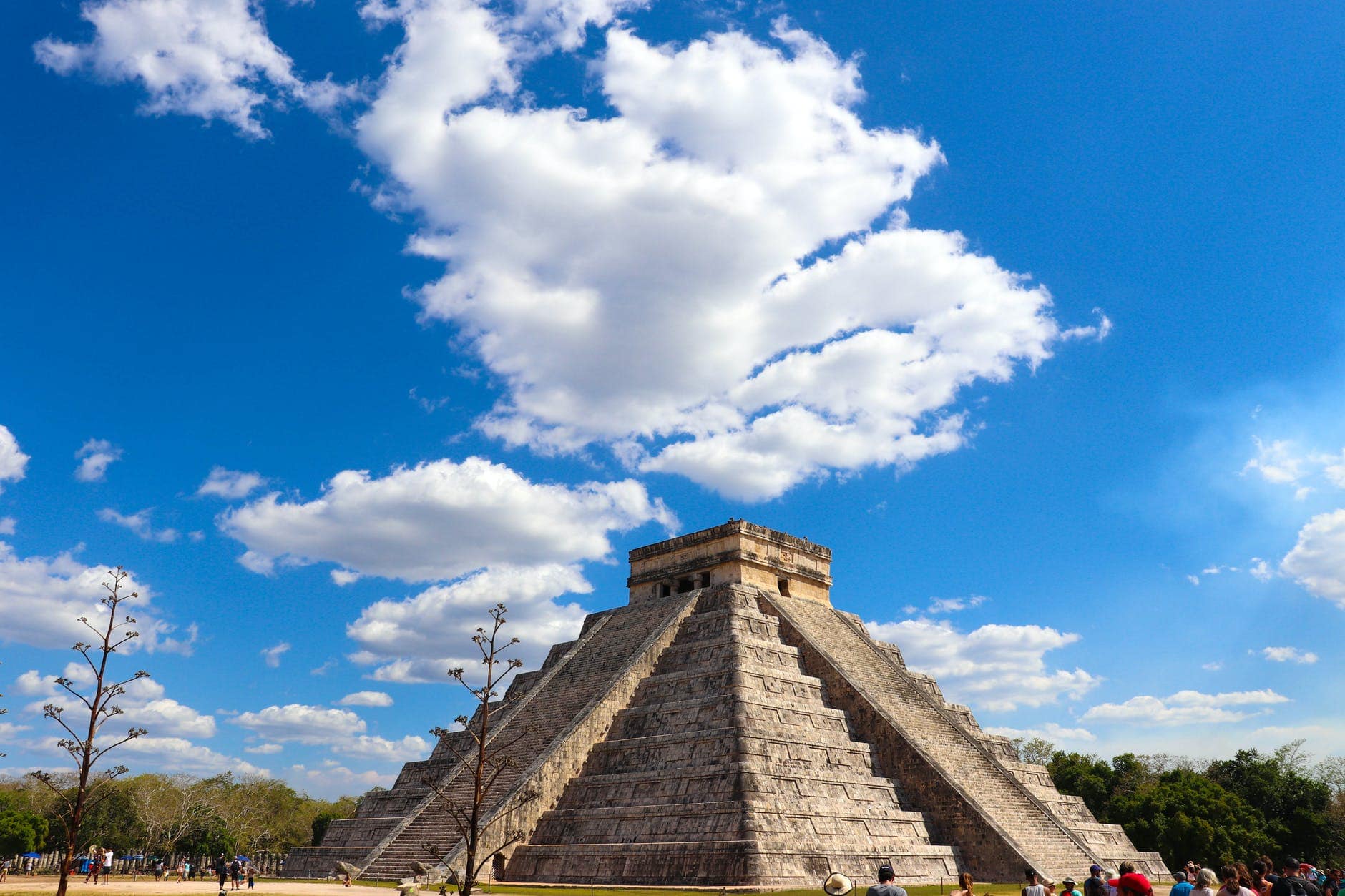
Mayan hieroglyphics and symbols came in many shapes and forms. They were used for various tasks. Many of them had strictly religious meanings while others could be used both as metaphoric and religious symbols, as well as for trade, politics, and other everyday tasks.
Virtually all Mayan symbols also represented some personality traits, such as wisdom, bravery, and integrity.
Religious Symbols
Many Mayan symbols represented their many gods, mythological figures, and the different abstract and philosophical concepts with which Mayan religion was infused.
These symbols can be found on Mayan temples, ruins, rocks and columns, as well as in Mayan art.
Most religious symbols didn’t just represent a particular deity but were also associated with various personality traits, natural elements and phenomena, days of the year and certain holidays and festivals, as well as some governmental functions.
Astronomic symbols
The Mayans had a much fuller and more comprehensive understanding of the cosmos than most European, Asian, and African cultures at the same time or even centuries later.
Mayan scientists and astronomers had spent countless years observing the skies and writing down the moving of the stars every night, season, and year.
They still connected the stars and the heavens to particular deities and legends as any highly religious culture does, so a lot of their astronomic symbols also doubled as symbols of the Mayan gods and legends.
Nature symbols
The Mayan people were also fascinated with the natural phenomena around them and had many symbols describing different types of wind, soil, rain and water, and many other natural occurrences.
They were also intrigued by the flora and fauna around them, and a lot of their hieroglyphs had deep animalistic symbolism, with the jaguar and the eagle being two of the most prominent animalistic symbols.
Everyday symbols
Mayan writing didn’t just serve a metaphorical and religious function – it was also used to help Mayan society with their everyday work such as trade, farming, and hunting.
Famous Mayan Symbols and Their Meaning
As most Mayan symbols had different religious, metaphorical, and practical meanings, putting each in a specific category would be impractical. Instead, here’s a quick list of the most popular Mayan symbols and their various meanings:
1. Kawak

Even though it looks like a serpent, Kawak is actually a symbol of thunder and the Mayan rain god Chaak.
The Mayans believed that when Chaak struck the clouds with his lightning axe, he caused the thunderstorms that showered over Mesoamerica for months every rainy season.
The Kawak symbol also stands for the nineteenth day of the Mayan calendar which is associated with the god Chaak. It’s a day for family and friendship, and for the nourishing of social relations.
2. Kib
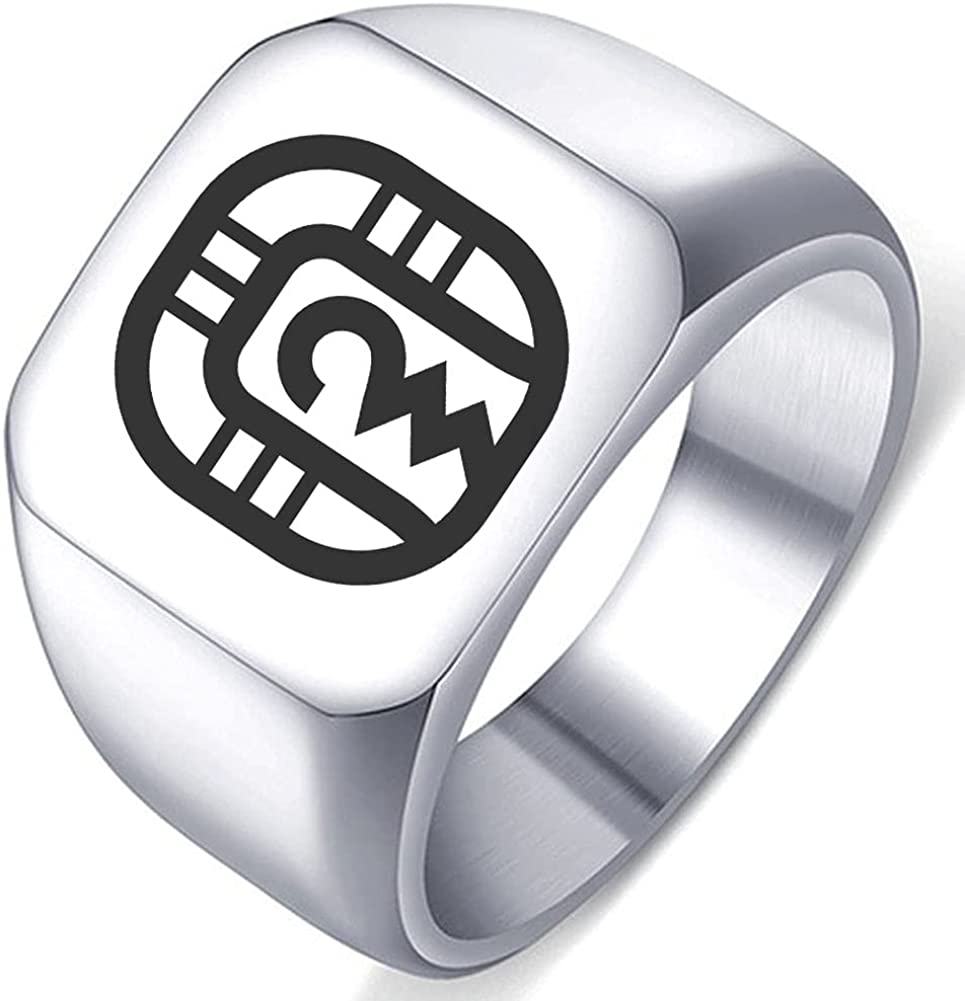
The Kib symbol isn’t associated with any particular deity but it’s vital both for religious and practical purposes – it’s the symbol for the word “candle.” The Mayans were expert candle makers and they cultivated stingless bees for their wax.
They made huge quantities of candles in all sizes and for various applications – both for lighting one’s home and for religious rituals in the Mayan temples.
3. Ix
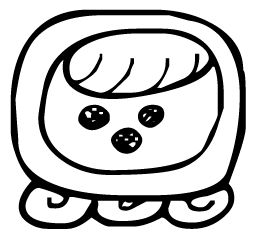
The Ix symbol looks like a happy baby’s face but it’s the symbol of the Jaguar – one of the most revered symbols in Mayan culture. It’s associated with traits such as wisdom and vitality, as well as the Mayan altar.
A sacred symbol, Ix is also a part of the Mayan calendar as it symbolizes the presence of the divine on Earth.
4. Chuwen

The Mayan god of creation, Chuwen represents life and destiny and so does his symbol.
Also known as B’atz, Chuwen created all that exists on the Earth and his symbol marks the eleventh day on the Mayan calendar.
5. Ok
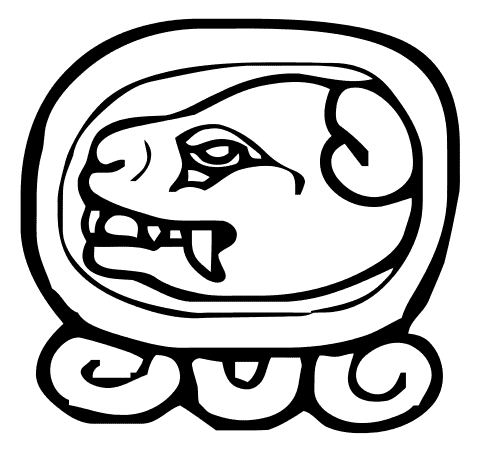
The Ok symbol isn’t pronounced “Okay” but similar to how we pronounce ox, just with a k instead of an x.
More importantly, the Mayan Ok symbol stood for more than a mere affirmation – it was the symbol of the law, both human and divine law.
As Mayan society was very rigid and placed a lot of emphasis on order and justice, the Ok symbol had a pivotal place in their everyday life as well as in their calendar and the Maya zodiac.
6. Manik
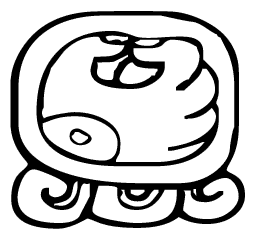
The symbol of the protector deer god Tohil, Manik is a symbol of hunting as well as the cycle of life.
Even though they had a very well-developed agriculture, the Mayans were also expert hunters and valued the hunt not just as a process for gathering food but as a sacred ritual that connects people with nature.
Mayan society viewed hunting as a part of the cycle of life and worshipped deer – their most common prey – as a sacred animal they were blessed to be able to hunt.
7. Akbal

The father of the Earth, Akbal was also the guardian of caves and the dawn. Akbal’s symbol stands for maintaining harmony in the world such as the harmony of the eternal day and life cycle that governs the Earth.
This god and his symbol are also associated with abundance and wealth. The Akbal symbol marks the third day on the Mayan calendar.
8. Imix
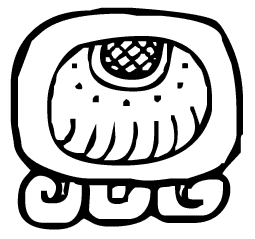
The Imix symbol expresses a whole different world and reality – the Underworld. The Mayans believed that crocodiles possessed the knowledge of the connection between Earth and the Underworld and served as the bridge between the two realms.
The Imix symbol doesn’t represent just the Underworld, however – it’s representative of the very idea of multiple different dimensions and existences. Consequently, it’s also associated with madness and insanity.
The Imix symbol marks the first day of the Mayan calendar and this symbol is also associated with the rain – Maya people would give thanks for the rain and water on the Imix day and pray for wisdom instead of madness.
9. Chichkchan

The symbol of the serpent, Chickchan is a sign of divinity and visions. It also symbolizes energy and the connection between humans and the Higher Forces.
The Heavenly Serpent is a beloved Mayan deity that can take many forms and Chickchan is the symbol of the fifth day in the Mayan calendar.
10. Kimi

Also known as Kame, this is the symbol of Death. Kimi is also associated with rebirth, reincarnation, and wisdom, however, as he is the guardian of the death, of Mayan ancestors, and of their knowledge and wisdom.
In Mayan culture, death was not just something to be feared but also a way to achieve peace and serenity.
Therefore, Kimi also represents the harmony and peace of death as well as the balance between life and death. As a symbol, Kimi represents the sixth day of the Mayan calendar.
11. Lamat

The sign of the rabbit, Lamat symbolizes fertility, wealth, abundance, and new beginnings. Its meaning revolves around the transformative nature of life and the change from one generation to the next.
This symbol is also connected to the planet Venus which, in Mayan culture, is associated with life, death, and rebirth. Lamat stands for the eighth day on the Mayan calendar.
12. Eb

The symbol of the divine twin brothers Hun-Alhpu, Eb also symbolizes a human skull as well as the road of life – the road every Mayan man and woman has to take to reach the metaphorical pyramid of Heaven and Earth.
The connection with the human skull is likely that the skull represents humanity. As a hieroglyph, Eb represents the 12th day of the Mayan calendar.
13. Men

This is the symbol of the eagle – the other most revered animal by the Mayans next to the jaguar.
One of the most powerful signs there is, Men represents the unity between the sun and the moon as well as the Sun God Hunahpu Ahau, Kukulkan.
The part of the Men symbol that looks like a face is there for the Moon Goddess, a deity of wisdom in Mayan culture. Men stands for the 15th day of the Mayan calendar.
14. Kaban

The Kaban sign symbolizes the power of the Earth, particularly the wrath of the many volcanos in Mesoamerica that the Mayans had to live with.
Kaban was also a symbol of knowledge and it marks the seventeenth day on the Mayan calendar.
15. Etznab
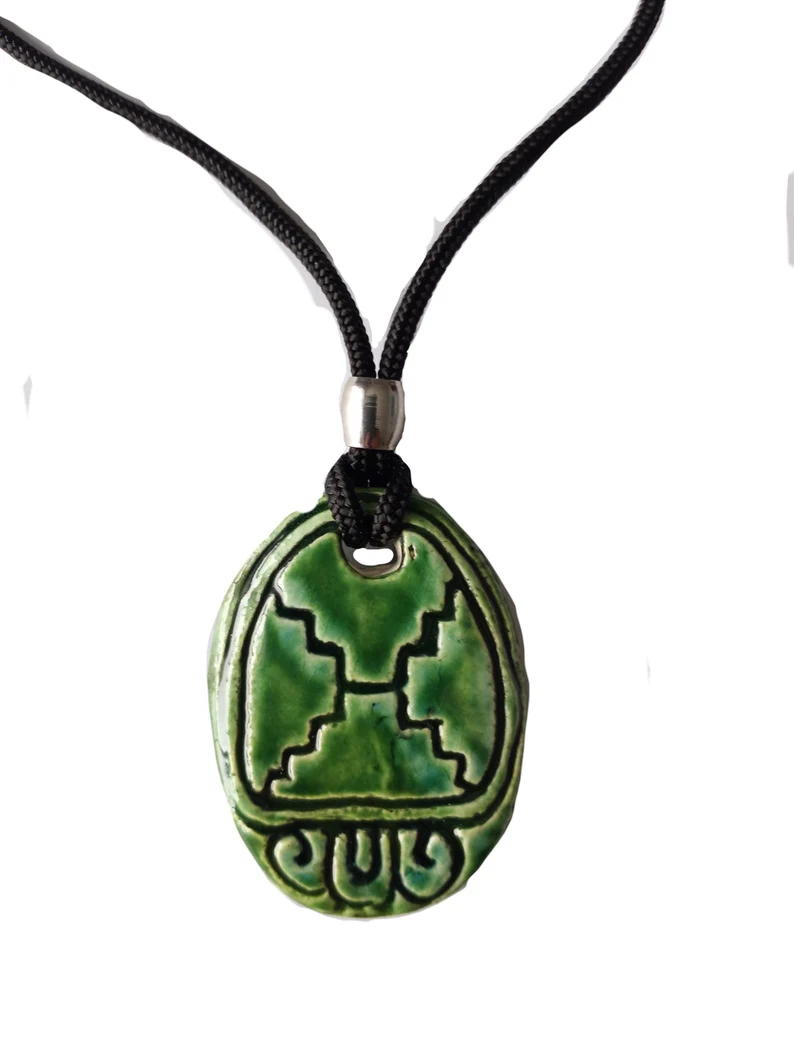
This is the symbol of flint – a very important material for the Mayan way of life. Given the lack of metals in their surroundings, the Mayan people had to use flint and obsidian for everything from building materials and tools to weapons.
As such, Etznab represents both courage and strength as well as healing and grace. The symbol of flint also marks the eighteenth day on the Mayan calendar.
16. Ahau
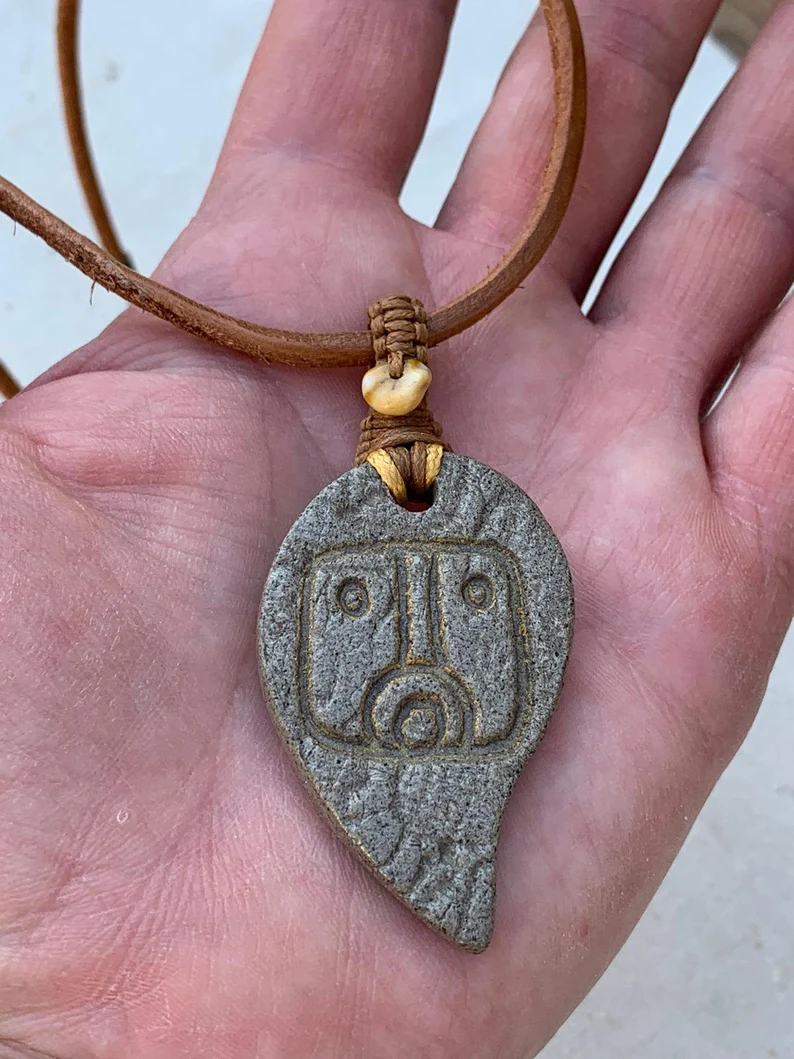
This funny-looking sign stands for the Sun-Eyed Fire Macaw. The Ahau day is the twentieth on the Mayan calendar and it’s dedicated to the Sun God.
This is also the symbol of the Mayan priesthood who performed most of the religious duties in Mayan society.
17. B’en

A symbol of corn and maze, B’en symbolizes many virtues – meaning, wisdom, triumph, luck, intelligence, as well as divine power.
It stands for the thirteenth day of the Mayan calendar and its many meanings indicate just how much the Mayans valued corn and maze.
18. Muluk
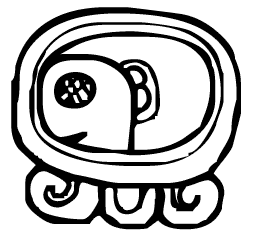
Another symbol connected to the rain god Chaak, Muluk represents raindrops. Also a symbol for the ninth day on the Mayan calendar, Muluk is associated with jade – the gemstone viewed as a “partner” of water and another representation of the life force.
19. Kan

Associated with fertility and abundance, Kan is the symbol of the harvest. Also a symbol of the lizard, Kan stands for the fourth day on the Mayan calendar and represents the slow growth and gaining of strength.
20. Ik
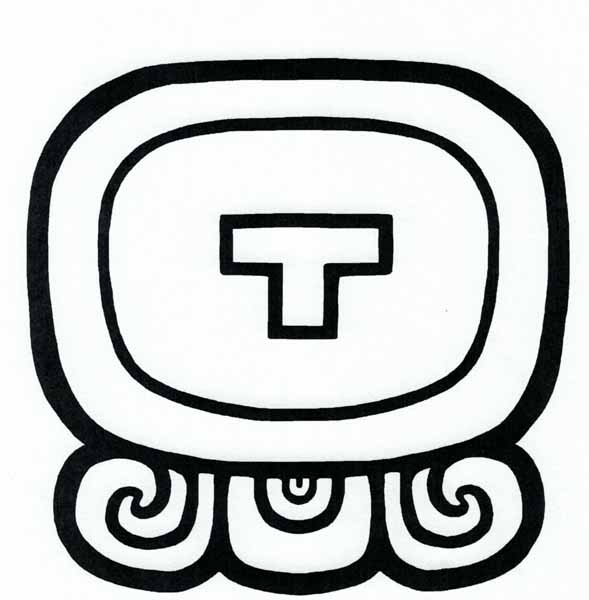
A symbol that looks like a smiley face emoji, Ik is actually the spirit of the wind. This Ik spirit is what the Mayans believed infused life into the Earth but also what often entered people and caused diseases.
Marking the second day of the Mayan calendar, Ik is nevertheless an overall positive symbol due to its connection with both life and rain.
Mayan Numbers
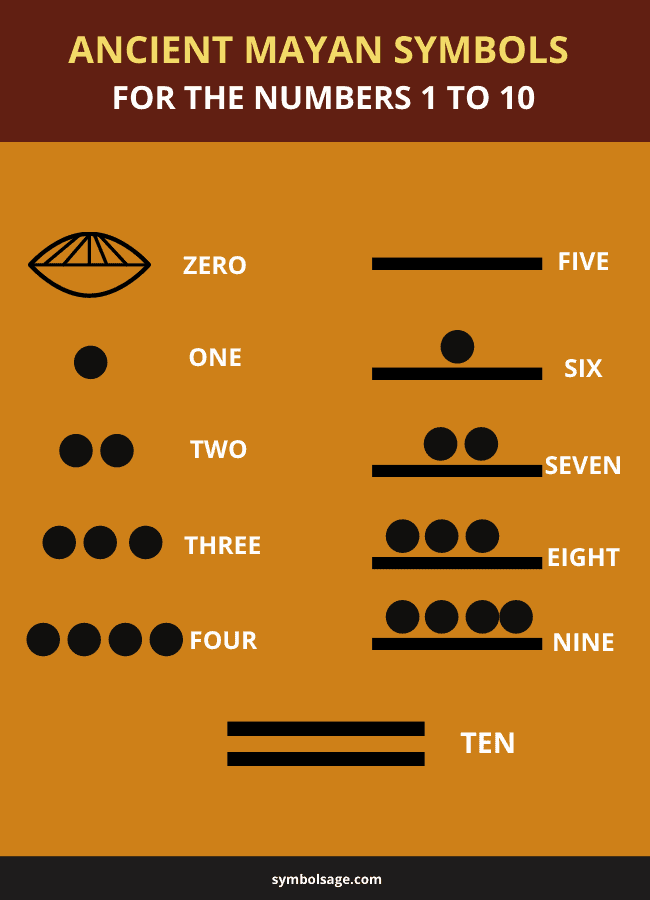
In addition to their hieroglyphical symbols, the Mayans also used a complex numbering system for both their calendar, as well as mathematics.
The Mayans’ system was as simple as it was effective – they used a dot to represent one unit and a horizontal bar for five. Two dots would therefore represent the number 2 and two bars stood for the number 10.
As a result, the Mayan mathematical system was based on twenty units where 19 were represented by 3 bars and 4 dots, 18 – by 3 bars and 3 dots, and so on. For the number 20, the Mayans wrote an eye symbol with a dot on top of it and for 21 – two dots were placed one over the other.
For all numbers above 21, the Mayans continued the same system by just keeping a dot underneath to indicate the higher base.
This system can feel impractical to people today, but it allowed the Mayans to easily represent numbers in the thousands which were more than enough for their needs at the time.
The Mayan Calendar
The Mayan calendar dates as far back as 3114 BC – the starting day of their chronology. Interestingly enough, while we mythicize the Mayan calendar today, it was actually very similar in structure to our Gregorian calendar.
The Mayans used a system of the following units:
- Days (called Kin)
- Months (Uinal)
- Years (Tun)
- Longer 7,200-day periods called Katun
- Even greater periods of 144,000 days called Baktun
There were a total of 20 days/Kin in every month/Uinal and each Kin had its symbol, which we covered above. Similarly, the Mayan Tun/year had 19 Uinal, each with its own symbol too.
The first 18 Uinals each consisted of 20 Kin, while the 19th Uinal only had 5 Kin. In total, the Mayan Tun had 365 days, just like our Gregorian year.
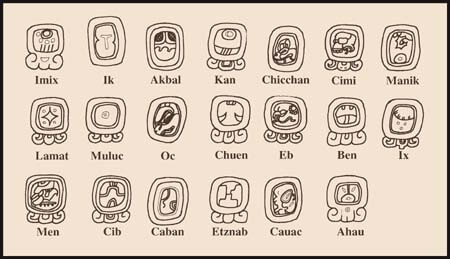
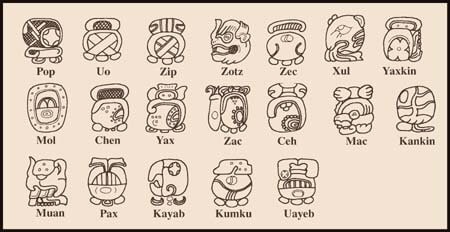
To express and mark their dates, the Mayans use both numbers (the dots and bars system we mentioned above) as well as the symbols for every Kin and Uinal.
So, where in the Gregorian Calendar we’d say that the Mayan calendar starts on August 13, 3,114 BC, the Mayans expressed that as 4 Ahau 8 Kumku.
To see how other Gregorian dates translate to the Mayan calendar, there are Mayan calendar converters online that you can easily use.
Wrapping Up
The Mayan civilization continues to fascinate people even today, and the symbols from this civilization can still be found used in a variety of ways – in jewelry, artwork, fashion and architecture.
Similar Articles:
Top 10 Aztec Symbols and Their Meanings
10 Most Popular Maori Symbols and Their Meanings
10 Popular Pirate Symbols and Their Meanings








